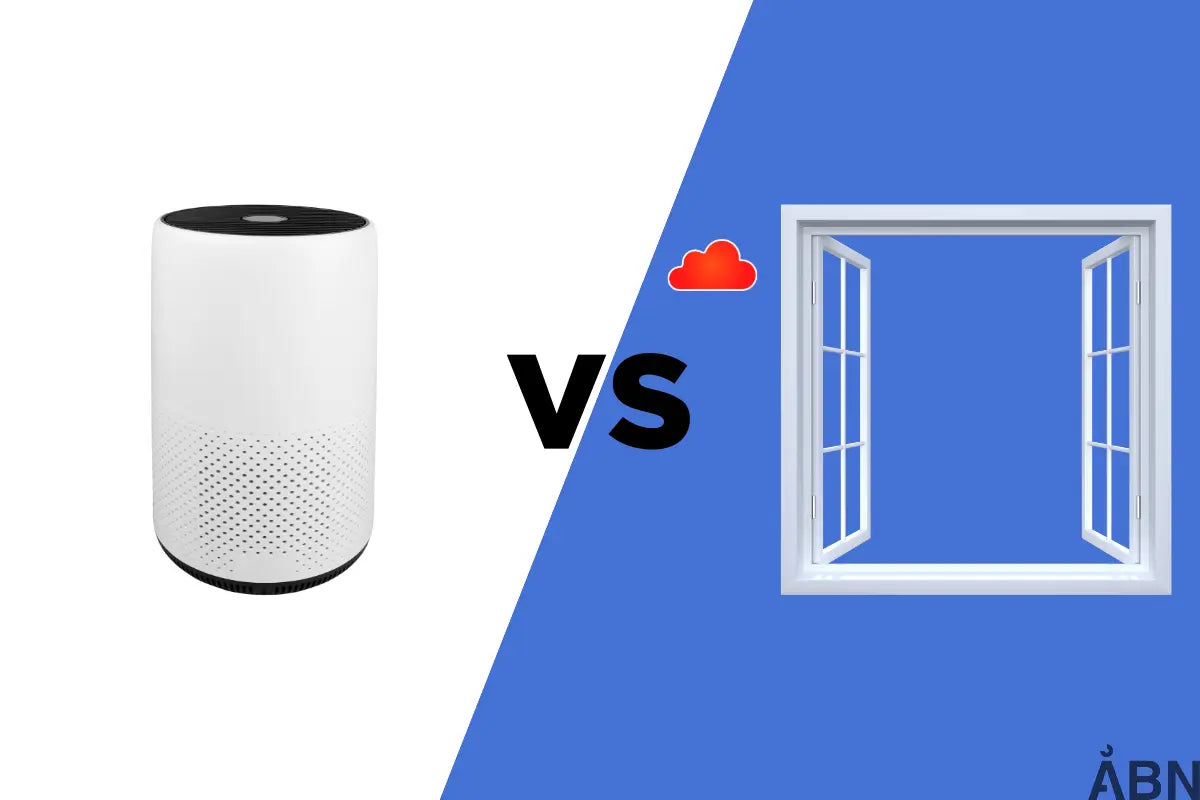Indoor air quality plays a crucial role in our health and well-being. However, many people experience problems with poor air quality, especially in dense buildings where ventilation may be limited. This raises the question: What is the best way to improve the air quality in our homes and workplaces? Should we rely on technologies like air purifiers, or is manual ventilation enough? Let’s dive into the two methods and their pros and cons to find out which works best.
What does an air purifier do?
An air purifier works by filtering particles and pollutants from the air in a room. Air purifiers are particularly effective at removing dust, pollen, smoke, and other airborne particles, making them a valuable solution for people who suffer from allergies or asthma. Some air purifiers can also reduce the amount of harmful gases, such as volatile organic compounds (VOCs), released from furniture, cleaning products, and building materials.
The advantage of air purifiers is that they can continuously filter the air without depending on outdoor air quality, which is an advantage in urban areas with high air pollution. However, they have their limitations. They do not remove CO2, which builds up in the air when we breathe, and they cannot supply fresh air. In addition, many air purifiers require regular maintenance in the form of filter changes to maintain their effectiveness.

Advantages of manual venting
Manual ventilation simply involves opening windows and doors to allow fresh air to circulate in a room. This is the most natural and direct way to renew indoor air and reduce CO2 levels, which can become too high if a room is not adequately ventilated. Fresh air from outside helps to remove both pollutants and unpleasant odors, making ventilation an effective method of improving indoor air quality quickly and at no cost.
A disadvantage of manual ventilation is that the air quality outside is not always optimal, especially in areas with high pollution or pollen. In urban areas, ventilation can actually lead to more pollutants entering the home, which can worsen the indoor climate. In such situations, air purifiers or mechanical ventilation systems may be a better solution.
Air Purifier vs. Venting: Comparison
It's clear that both air purifiers and manual ventilation have their advantages and disadvantages, but which method is best for improving your indoor climate? Here's a comparison based on several factors:
1. Removal of particles and allergens
Air purifiers are very effective at filtering particles like pollen, dust, and pet dander, making them a good solution for people with allergies or asthma. However, manual ventilation can also help reduce the concentration of these particles, especially if the air outside is clean and free of pollen.
2. Removal of CO2
Ventilation is clearly better at reducing CO2 levels. When we stay in a closed space for a long time, CO2 levels rise, which can lead to headaches, fatigue and reduced concentration. Air purifiers cannot remove CO2 as they simply circulate and clean the existing air.
3. Air quality in urban areas
In urban areas with high air pollution, manual ventilation can lead to harmful particles and gases entering the home. Here, air purifiers can be a better solution, as they can capture many of these particles and improve indoor air quality.
4. Energy consumption
Air purifiers use electricity and can therefore incur additional costs in electricity consumption, especially if they run continuously. Manual ventilation does not require any energy, but in the winter months it can increase the need for heating as the cold air flows in. However, this need can be significantly reduced by making short-term drafts.
5. Long-term maintenance
Air purifiers require regular filter changes and maintenance to function effectively. Filter systems can become clogged over time, reducing efficiency and potentially rendering the units ineffective. Venting requires no maintenance, but it can be difficult to maintain a constant flow of fresh air during the winter months or on days with inclement weather.
What works best for you?
The best choice between an air purifier and manual ventilation depends on your needs and surroundings. If you are in an area with good outdoor air quality, manual ventilation may be sufficient to maintain a healthy indoor climate. This will help reduce CO2 levels and bring fresh oxygen into the home without the additional cost of electricity or maintenance.
However, if you live in an area with high levels of pollution or have specific needs, such as reducing allergens in the air, an air purifier may be a better solution. A combination of both methods – ventilating when possible and using an air purifier as a supplement – may be the most effective way to ensure healthy and comfortable indoor air.
By choosing the right solution for your home, you can achieve a significant improvement in your air quality, which contributes to better health and well-being for you and your workplace.
A combination for the complete solution
In conclusion, it can be a great advantage to combine an air purifier and manual ventilation to achieve a more complete and optimal indoor climate. By utilizing both methods, you get the best of both worlds: Ventilation ensures that fresh air is supplied, which reduces CO2 levels and vents harmful gases, while an air purifier can effectively remove small particles, allergens and harmful substances that may be present in the indoor air.
This combination makes particular sense in urban areas where the outdoor air can be polluted, but where fresh air is still necessary to maintain a healthy environment. By opening the windows regularly and supplementing with an air purifier, you can ensure a constant flow of fresh air, while filtering any particles that may enter from outside. This creates a balanced indoor climate that both reduces the amount of indoor pollutants and ensures that there is no accumulation of CO2 or other harmful gases.
Doubtful about what's in your indoor climate?
ÅBN has developed a simple sensor, SKYEN, which gives you insight into six indoor climate factors that can affect your health and productivity. The sensor measures, among other things, CO2 and TVOC, which can tell you about your need for ventilation and air purifiers. Contact us or read more about the SKYEN indoor climate meter here

Sources:








Kasper —
Rigtig spændende artikel 👏 Vi har selv oplevet, hvor meget forskel indeklimaet kan gøre – især med børn i huset. Udluftning er super vigtigt, men i perioder med pollen har vi haft stor glæde af at supplere med en luftrenser.
Jeg har faktisk samlet vores erfaringer og tips i en guide, hvor jeg gennemgår de vigtigste ting at vide, før man køber luftrenser 👉 Guide: https://luftrenserguiden.dk/
Måske den kan hjælpe andre, der står og overvejer, om en luftrenser giver mening i deres hjem 🌬️✨